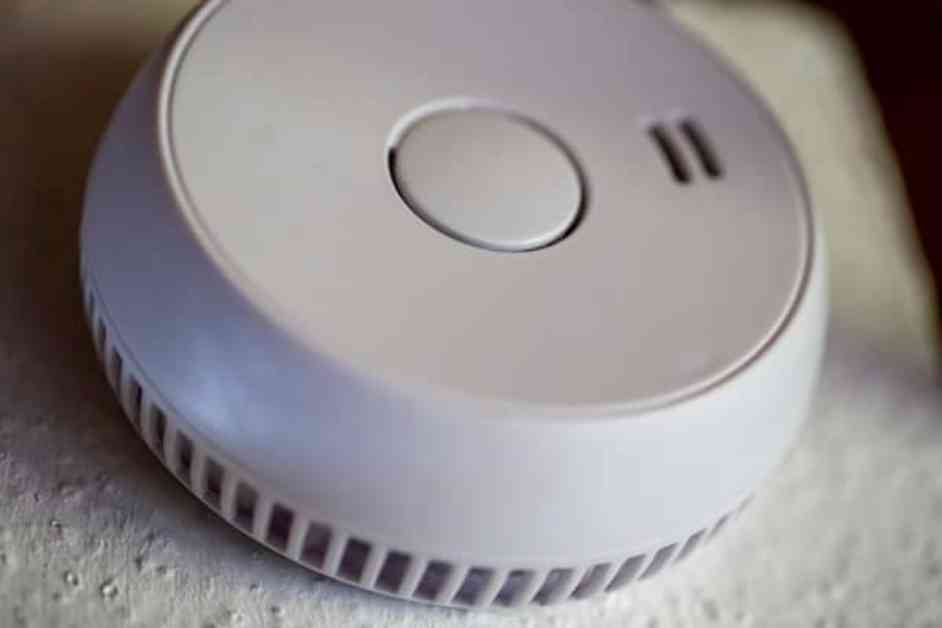Benefits of Wireless Fire Detectors in Modern Fire Systems
In recent years, modern fire detection systems have increasingly integrated wireless technology as a key component. These wireless systems offer a multitude of advantages over traditional wired systems, making them a preferred choice for new installations and retrofitting older buildings. From enhanced flexibility to cost-effectiveness and scalability, wireless fire detectors have revolutionized the way fire safety is approached in various settings. Let’s delve deeper into the main advantages of wireless fire detectors and explore how they can significantly reduce fire risks and enhance emergency response capabilities.
Ease of Installation and Flexibility
One of the most notable advantages of wireless fire detectors is the ease of installation they offer. Unlike traditional wired systems that require extensive cabling throughout a building, wireless detectors communicate via radio frequency, eliminating the need for complex wiring. This is particularly beneficial in buildings with architectural or structural challenges, such as historical sites, where running cables might not be feasible or could potentially damage the structure.
The flexibility of wireless systems allows for quick and easy installation in various environments, including temporary structures or locations where the layout may change frequently. For example, in office buildings where space utilization evolves over time, wireless detectors can be effortlessly relocated without the need for rewiring, saving time and minimizing disruption to operations.
Cost-Effectiveness
While the initial costs of wireless fire detectors may be higher than those of their wired counterparts, the overall cost of installation and maintenance often makes wireless systems more cost-effective in the long run. By eliminating the need for extensive cabling, labor costs and installation time are significantly reduced. This is especially advantageous in large or complex buildings with prohibitive cabling expenses.
Furthermore, maintenance costs are typically lower with wireless systems. Unlike wired systems that may require periodic checks and repairs to ensure the cables are intact and functioning correctly, wireless systems eliminate the risks associated with damaged or degraded wiring, further reducing long-term maintenance expenses.
Scalability and Expandability
Wireless fire detection systems offer unparalleled scalability, allowing for seamless integration of additional detectors as buildings expand or their fire safety needs evolve, without requiring extensive rewiring. This makes wireless systems ideal for businesses anticipating growth or changes in their physical layout. Additionally, wireless systems are highly compatible with modern building management systems (BMS), enabling easy integration with other safety and security technologies such as access control systems and surveillance cameras. This integration enhances the overall safety infrastructure and ensures a more comprehensive emergency response.
Reliability and Signal Strength
A common concern with wireless systems is the reliability of the signal, particularly in large or densely constructed buildings. However, modern wireless fire detectors incorporate advanced technology to ensure solid and consistent signals. Many wireless systems utilize mesh networks, where each detector acts as a repeater for others, ensuring that even if one fails, the system remains operational by rerouting signals through other detectors. Moreover, wireless systems often operate on dedicated frequencies, minimizing interference from other wireless devices within the building.
Battery technology has also advanced, with long-life batteries ensuring detectors remain functional for extended periods. Regular alerts for low battery levels further enhance reliability, ensuring the system is always ready to respond to a fire.
Enhanced Safety and Response Time
Wireless fire detectors play a crucial role in enhancing safety and improving emergency response times. By enabling faster and more flexible installation, wireless systems can be deployed in areas that might be challenging or time-consuming to reach with wired systems, allowing for more comprehensive coverage and ensuring no area of the building is left unprotected.
Moreover, wireless systems can be configured to send alerts directly to emergency responders, reducing the time between the detection of a fire and the initiation of a response. In cases where every second counts, this can significantly reduce potential damage caused by a fire and ultimately save lives.
Minimal Disruption During Installation
One key benefit of wireless fire detectors is their ability to be installed with minimal disruption to building occupants. Unlike wired systems that may require significant construction work to install cabling, wireless systems can be deployed without interrupting daily operations. This is particularly advantageous in environments such as hospitals, schools, and offices, where continuous operation is essential, allowing businesses to keep operations open and avoid inconveniencing customers during installation. In residential buildings, tenants can remain in their homes without dealing with the noise and inconvenience of drilling and construction work.
Improved Aesthetics
Wireless fire detectors contribute to improved aesthetics within a building, as there is no need for visible cabling or conduits. The detectors blend more seamlessly into their surroundings, which is particularly important in high-end residential properties, hotels, and commercial buildings where maintaining a clean, modern appearance is a priority. In historical buildings, wireless detectors provide necessary fire protection without compromising the structure’s architectural integrity, allowing for better preservation of heritage sites while ensuring compliance with modern safety standards.
Compliance with Regulations
Wireless fire detection systems fully comply with modern fire safety regulations and standards. Regulatory bodies have recognized the efficacy of wireless systems, ensuring they meet the stringent requirements of wired systems. This compliance ensures that buildings equipped with wireless detectors are legally protected and adhere to best practices in fire safety. Wireless systems can often be updated or upgraded to meet changing regulations, as they can be reprogrammed or replaced without extensive rewiring, making it easier to keep the system up-to-date with the latest safety protocols.
In conclusion, wireless fire detectors represent a significant advancement in fire safety technology. Their ease of installation, cost-effectiveness, scalability, reliability, and enhanced safety features make them a superior choice for modern fire detection systems. By reducing installation time and costs, minimizing disruption, and improving emergency response capabilities, wireless detectors help create safer environments in various settings.

